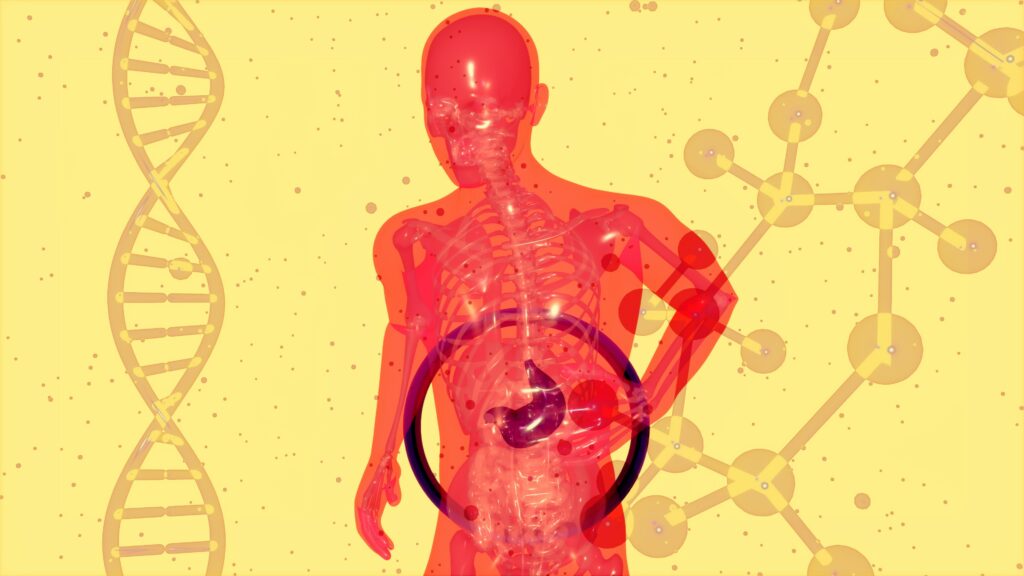It’s an exciting time for research into microbiome therapeutics. This can be seen in the explosion of new clinical studies in the field, which, as of March 31, 2022, numbered 1,485. That research, coupled with the potential of the first-ever microbiome therapy approval on the horizon, has made 2022 a red-letter year for the microbiome field.
During the 2022 BIO International Convention, a panel – “Gut Check: Current Trends in Microbiome Therapeutics Development Health Market” – explored what’s next for the microbiome field. Sponsored by FUJIFILM, the panel was moderated by FUJIFILM Diosynth Biotechnologies’ Chief Scientific Officer Andy Toping, with experts including:
- Daniel Couto, Chief Operating Officer at Vedanta Biosciences Inc.
- Matthew Henn, Ph.D. and Executive Vice President and Chief Scientific Officer at Seres Therapeutics
- Sonia Timberlake, the VP at Research Finch Therapeutics Inc.
The ‘broad potential for microbiome therapeutics’
“The fact that we have far more microbiomes within one human body than there are people on the entire plant is a fun, and somewhat terrifying, a statistic we have enjoyed pulling out at family events,” said FUJIFILM’s Toping.
“Luckily, as research has developed, we’ve come to understand that these microorganisms are much more than opportunistic passengers,” continued Toping. The panel wholeheartedly agreed.
“I think there is broad potential for microbiome therapeutics,” said Matthew Henn of Seres Therapeutics. “Where our knowledge is greatest is certainly within the gastrointestinal tract, and that is certainly where the majority of companies have been focused. I think there’s still plenty of opportunity to be had in the GI space because I think what we’re learning is that the gut is really a super organism that has broad systemic implications.”
Sonia Timberlake of Finch Therapeutics Inc. echoed his sentiment: “You don’t necessarily need to look outside the gut to have systemic effects. 70% of your immune cells reside in the gut. Your immune system is largely evolved to control microbes, 100 trillion of which are in your gut.”
“The data robustly demonstrate that interventions in the gut and the gut microbiome, have really profound systemic effects,” continued Timberlake.
How do you regulate the microbiome?
The microbiome field is profoundly exciting because it is breaking new ground in many ways, which can be seen in the Food and Drug Administration’s (FDA) attention to the field and how to regulate it.
“All of our interactions with agencies have been around defined bacterial consortia from day one, which means the toolset that we have to be able to use to measure, monitor, and understand what’s going on in the body is a little more acute,” explained Daniel Couto of Vedanta Biosciences Inc. “From a regulatory point of view, for political development, I think that our interaction has been very collaborative and we have been trying to learn from each other. They’ve been very helpful and open with feedback, as well as quick to ask questions, which is exactly the dynamic you want in a new field of study.”
“The learning has gone both ways to make sure that our clinical development plans are in line with what the agency is looking for,” added Timberlake. “There are unique aspects of this field, but a lot of this field does look like traditional therapies, either new biologics or in terms of PK/PD properties that might be more analogous to cell therapies.”
“The agency has live biotherapeutics guidance that has been established for quite some time,” added Henn. “A lot of folks think microbiome therapeutics are living way outside the box, but really we are working closely with agencies. Guidance that exists with the agency has had to be tweaked slightly in different ways, but nothing drastic.”
Henn added that the company has had an “ongoing dialogue with the agency throughout the development of both our donor drive and our inner cultivated based consortia.”
Challenges with manufacturing, labor
“At Seres Therapeutics, we have invested in manufacturing from day one as a company because we saw the need,” continued Henn. “Now, close to 10 plus years, we’ve put a lot of energy into thinking about how we inactivate the things that we don’t want to be there, particularly in the context of donor-derived products.”
It is a strategy that has served Seres Therapeutics well: “The fact that the FDA allowed Seres to progress right through the COVID pandemic, with no delays, speaks to the value of that inactivation,” he said.
But like much of the biotech industry, the microbiome field faces a variety of challenges, one of which is a tight labor market.
“Even though it’s been a tight labor market, there’s so much excitement about microbiome research,” said Timberlake. “I think people believe, like we all do, that this is going to be a really disruptive field and in fact, it already is a disruptive field.”
Couto was more tempered: “The types of people that we need aren’t just researchers coming out of good institutes that have a fantastic experience. We’re also looking for people that have drug development experience, as well as regulatory experience, and manufacturing experience.”
“The challenge in this space has been how do you drive innovation in a new technology space by bringing early-career folks with those who have drug development experience. It’s been an interesting mix,” said Henn.
“Put simply, we’re going to continue to try to build a company that people want to work at,” said Henn.




